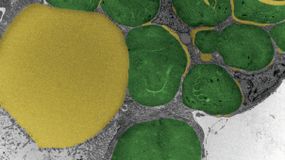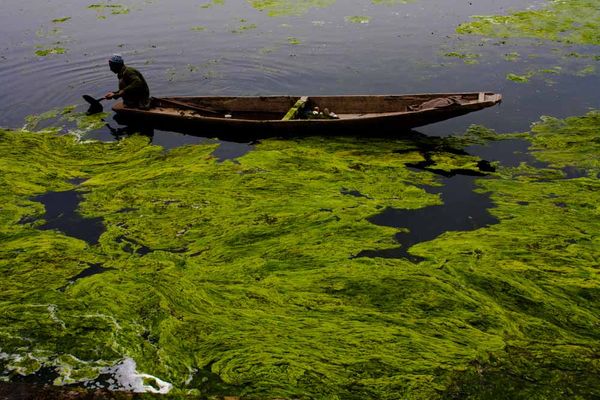
Slugs, in general, don't often impress. But a green sea slug that floats around the intertidal zone along the northeast coast has wowed scientists with this ability: It can suck out an algae's parts that generate energy from sunlight — and incorporate them into its own biology. In doing so, it becomes an animal with the photosynthetic ability of a plant.
"This slug is really unique," says Debashis Bhattacharya, a biochemist and microbiologist at Rutgers University-New Brunswick and senior author of a paper appearing in Molecular Biology and Evolution about the sea slug, Elysia chlorotica. "It steals the algae's plastids and then directs them without the help of the algal nucleus."
Advertisement
Other animals, including corals and some salamanders, are known to incorporate algae to benefit from algae's ability to photosynthesize, or generate energy from the sun. What makes Elysia chlorotica unique is it takes only the plastids, or the organelles that contain chlorophyll and perform photosynthesis, from the algae. The slug then uses its own genome to keep the plastids operating within its own body throughout the rest of its life.

Figuring out how the slug keeps these algae-made solar panels functioning could lead to innovations in developing green machines that need only sunlight to generate energy or bioproducts that could be used as biodeisel, says Bhattacharya.
As a juvenile, Elysia chlorotica sucks in the brown algae, Vaucheria litorea. The structure of this brown algae lends itself to efficient sucking since it has no walls between the cells in its body. The slug then digests the algae's nuclei, but stows the algae's plastids in the lining of its gut. Once the slug has ingested the algae's solar panels, it survives off photosynthesis for the remaining six to eight months of its life.
"The only reason the plastids stop working is the sea slug completes its lifecycle and dies," says Bhattacharya. "That suggests that the plastids could be kept functioning for a long time. If this slug's ability could be engineered, you could build a green machine that runs indefinitely."
Advertisement


